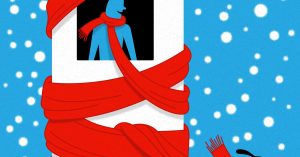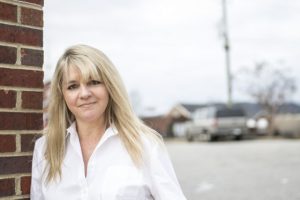
Putting some of your leftover cash in a high-yield savings account can provide a buffer against unexpected emergencies and help you pay off existing debt. (iStock)
Savings can provide a buffer against unexpected personal finance emergencies. When the economy is booming, people tend to spend more and save less. When the economy is slow, personal savings grow. During the coronavirus pandemic, Americans started saving more.
High-yield savings accounts provide higher interest rates than traditional savings accounts or a checking account, which more than likely does not earn any interest or otherwise has a much lower interest rate. When paying off consumer debt, building an emergency savings fund or saving up for a large expense, high-yield savings accounts can help you attain your objectives.
Having such an account can help fund expenses and debt repayment like an auto loan, loans for bad credit or a home equity loan. When shopping around for your best high-yield savings options, visit Credible to explore possible solutions that could be making you more money.
Here are a few debt relief tips to help you pay off high-interest debt and simultaneously save money with a high-yield savings account to achieve your goals quicker.
HOW TO CHOOSE A HIGH-YIELD SAVINGS ACCOUNT
1. Create a strict monthly budget for personal expenses
The national average savings account earns just 0.04% APY, according to the FDIC. High-yield accounts make much more, sometimes as much as 10 times more. For example, American Express offers high-yield accounts with a 0.40% APY.
And, although personal savings have grown during the pandemic, interest rates have remained low. Ken Tumin, the founder of DepositAccounts.com, said he expects that “widespread gains are unlikely until at least 2024.”
If you want to get ahead, it’s vital to create a strict monthly budget and stick with it. There are several good reasons for a personal budget:
- A monthly budget helps you keep your eye on the prize so you can meet your long-term goals.
- A budget can help you understand where your money goes each month.
- Personal budgets can help ensure you don’t spend money you don’t have.
- A budget can help you in preparing for retirement and unexpected emergencies.
- Strict monthly budgets highlight any bad spending habits.
- A monthly budget can also help you pay down debt.
5 MYTHS ABOUT HIGH-YIELD SAVINGS ACCOUNTS
2. Don’t take on any new debt
If you’re trying to simultaneously save and pay down or pay off moths worth of existing debt – like student loans, paying off credit card bills or a car loan – the last thing you need is new debt. Of course, if you have no emergency fund to fall back on and something unexpected happens, you may need to consider a personal loan. Right now, interest rates are low but any new debt will still need to be repaid, which may leave little to add to a high-yield savings account.
4 REASONS TO OPEN A HIGH-YIELD SAVINGS ACCOUNT RIGHT NOW
3. Reduce spending on non-essentials
If you find yourself buying coffee from a local shop seven days a week, you may want to make coffee at home once in a while and put the money you save into a high-yield savings account. Essentials like food, gas and rent are expensive, so saving where you can is sensible. Credible can explain the process of opening a high-yield savings account via an online bank. Follow these steps to open up a high-yield online savings account and save more money now.
4. When you make a purchase, pay with cash
Before credit cards, everyone paid with cash. It’s much easier, however, to pay with a credit card than to part with the green stuff in your wallet. So, if you commit to paying for most things with cash, you may find yourself spending less and putting what you save into a savings account. Explore how you can earn more cash with high-yield savings options via Credible. And, when you go out, leave your credit cards at home.
WHY IT’S A GOOD IDEA TO PUT SOME MONEY IN A HIGH-YIELD SAVINGS ACCOUNT
5. Cut down or cut out subscription services
A recent survey by Instamotor found that nearly one in 10, or 9.3% of millennials between the ages of 18 and 34, admits to spending $200 or more each month on subscription services. However, many of those services are never used. Instead of spending all of your hard-earned cash on months worth of subscriptions, cancel those that you don’t use and put the money into a high-yield account and build yourself an emergency fund.
The bottom line
Debt management can take a while even if some some debts have come on quickly, but following these tips can help. But when it comes to putting money away for a rainy day, retirement planning, saving for home improvement projects, paying off credit card balances or making a mortgage down payment if you’re a first-time home buyer, don’t leave money on the table. Maximize your earnings with high-yield savings account options on the Credible marketplace.
Advertisement
Have a finance-related question, but don’t know who to ask? Email The Credible Money Expert at moneyexpert@credible.com and your question might be answered by Credible in our Money Expert column.




